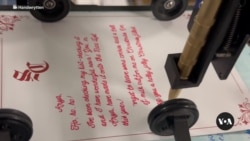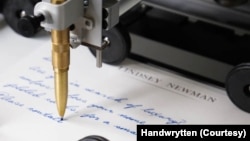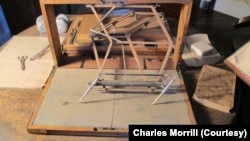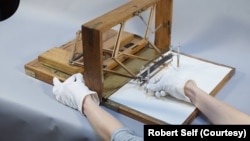Writing by hand is something humans have done for millennia. Since prehistoric times, people have used every tool imaginable to etch onto stone, carve into clay, and ink parchment and paper to convey information, conduct business, and create personal correspondence.
But as computers took over the job and the type-written word became the norm, something was lost in the process; namely, the charm and personal nature of a hand-crafted note or letter.
Hand-writing robots
Now, like many things once considered too old fashioned, letter writing is making a comeback… in the form of AI-operated robots that can hand write notes for humans in their own handwriting.
“Receiving a handwritten note appeals not only to your eyes, but the feel as well,” said
David Wachs, CEO and founder of Handwrytten. “I think what's old is new again.”
The Phoenix-based company’s main clients are businesses that use handwritten letters and thank you notes created by the company’s fleet of robots to create stronger, more personal connections with their customers. And those customers appreciate it, Wachs says.
A large part of their business is nonprofits, he says, which they help to keep donations flowing.
Many non-profits have trouble turning one-time contributors into annual givers, Wachs explains, because the contributors feel unappreciated.
So they help those nonprofits reach out in a more meaningful way through handwritten letters.
A president’s hobby
Automated letter writing isn't a new phenomenon. Thomas Jefferson, the third U.S. President, was a huge fan and prolific user of the Polygraph -- a machine created by British inventor John Isaac Hawkins. Jefferson considered the device the greatest invention of his time as it allowed him to make duplicates of his letters to keep for his own records.
When Benjamin Henry Latrobe – the second architect who helped design the U.S. Capitol – introduced the polygraph to Jefferson, the president was immediately smitten, says Charles Morrill, a polygraph enthusiast, historian and professional woodworker who worked as a guide for several years at Monticello, Jefferson’s Virginia home from 1770 until his death in 1826.
“Jefferson falls in love with this and it becomes in many ways the hobby of his presidency,” says Morrill. “He keeps buying machines and exchanges ones that are not quite perfect for the next one that’s a little bit better.”
“For Jefferson, it's almost like a print shop with a copy potential of one,” he says, with the president ending up with more than ten of them at one point. This was pushing the technology of the day to its limit.”
Using what he considered a marvel of technology, historians say Jefferson went on to write almost 20,000 letters in his lifetime.
In a January 15, 1809 letter to Charles Willson Peale, who worked with Hawkins to develop and perfect the machine, Jefferson writes:
“The use of the polygraph has spoiled me for the old copying press the copies of which are hardly ever legible,” adding, “I could not, now therefore, live without the Polygraph.”
“We had this president who was absolutely convinced that the new, new thing wasn't something that you would want. It was something you absolutely had to have,” Morrill says.
During a tour he was giving at Monticello one day, Morrill says he had a visitor ask, “What is it about you Americans and this new, new thing? Other cultures aren't like this. You Americans are just so absolutely convinced that the next new thing is going to do it; the latest software, the latest computer, the latest phone.”
“And I think this kind of begins with Jefferson,” Morrill says.
From early Polygraphs to AI-generated letters
Handwriting technology has greatly evolved since Jefferson’s time.
Wachs says it now includes 3D printing and laser cutting, and electrical circuit board design for the robots they use to do the work of humans.
And if users need help thinking of exactly what to write in their note, they can choose the AI assist button to help them generate a more effective message through its ChatGPT function.
Whether via the printing press or the polygraph, a computer or a robot, one thing is clear… humans will use whatever tool at their disposal to express themselves through the printed word, for convenience, sentiment, and posterity.









